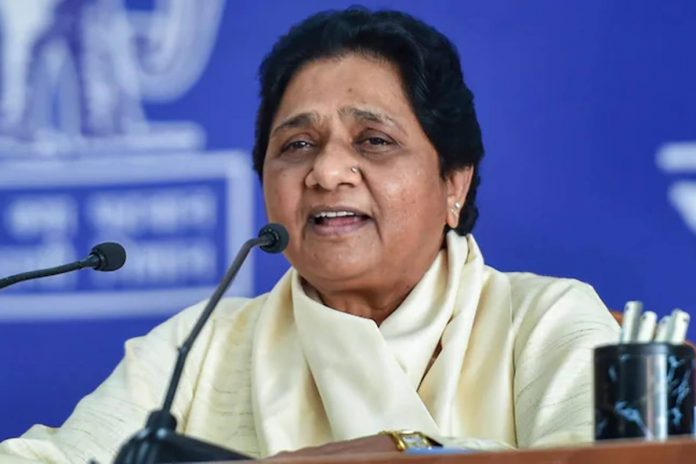
Many independent observers believe that Mayawati may be down but she is not out yet.
Hina Khan | TwoCircles.net
LUCKNOW — The rout of the Bahujan Samaj Party (BSP) led by former chief minister Mayawati in the Uttar Pradesh assembly election has put a question mark over the political fate of Mayawati and the BSP movement in the state.
After performing poorly in the elections, questions have been raised about the marginalization of Mayawati and her party, which had won 19 seats in the 2017 elections with around 22 per cent votes.
Should Mayawati be written off right away after the dismal performance of her party? Has she compromised the Dalit interest to stay afloat during UP’s most turbulent phase of communal and caste politics? Her poor performance has also raised the question of whether Dalit votes were shifted in large numbers to the BJP.
Her 18 rallies through seven phases of the campaign made for an abysmally low public appearance in a state which installed her in power four times. Congress leader Priyanka Gandhi with 209 roadshows and Chief Minister Yogi Adityanath with 203 were the most visible campaigners in the state. Samajwadi Party leader Akhilesh Yadav with 117 rallies was way ahead of Mayawati.
One of the reasons for BSP’s downfall is the rising Dalit support to the BJP due to largesse being handed by that party while in power. BJP has been doing well on the 85 seats reserved for the backwards. In 1991, BJP got 50; in 1993 it got 33; in 1996, 36. But it rode to power with 67 seats in 2017. BSP’s best on the other hand was 62 out of 85 in 2007 when it wrested power on its own. The caste and communal equations are dynamic and lead to the shifting of power. Muslims, who stayed put with Mayawati in 2007 had moved to the Samajwadi camp. Mayawati’s indifference had cost her their support.
Many other Dalit personalities, who were not badly off economically, felt neglected by the party despite their merit and loyalty. She preferred non-Dalits to be fielded in elections. Dalit bureaucrats did earn her trust but most of them have deserted her for lucrative positions in other parties. They accuse her of deviating from the ideology of Kanshiram, her mentor and founder of the BSP. Fateh Bahadur Singh, former principal secretary to the chief minister during BSP rule, recently joined the Samajwadi Party. He had objected to BSP handing the party leadership in the Lok Sabha and Rajya Sabha to Brahmins. Another former IAS officer, PL Punia, is with Congress for quite some time now. Former Director-General of Uttar Pradesh police Brijlal has been conveniently adopted by BJP as its Dalit representative. Mayawati has thus allowed her image to be dented by myopic decisions. Her key strength during peak years in power was a quick uptake on caste equations in most parts of the state and she had all figures on her fingertips. That spark seems to have gone missing.
Though defeated in UP polls, her core constituency of Jatav voters still swear by her. And that forces many independent observers to believe Mayawati may be down but she is not out as yet. She may end up way behind in terms of electoral gains but that doesn’t make her irrelevant.

